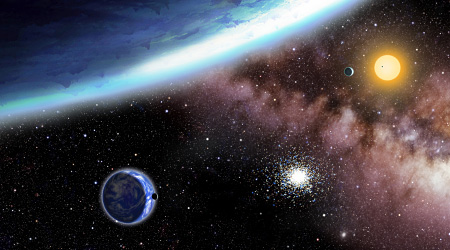Kepler Finds Two Worlds In The Habitable Zone

A significant amount of astronomical research has been dedicated to mapping the skies looking for planets orbiting stars similar to our own and located in the Habitable Zone, also referred to as the "Goldilocks zone." The Goldilocks term is in reference to a planet which is at a certain distance from a star with a temperature that is not too hot or too cold. This region is important to maintain liquid water because too hot would create vapor and too cold would mean ice formation.
Five planets were discovered orbiting a star named Kepler-62 approximately 2,000 light-years from Earth. Two of the five planets, named Kepler-62e and Kepler-62f, are located in the habitable zone and are likely to have liquid water on the surface.
"Kepler-62e probably has a very cloudy sky and is warm and humid all the way to the polar regions. Kepler-62f would be cooler, but still potentially life-friendly," said Harvard astronomer and co-author Dimitar Sasselov.
They were located using the Kepler satellite launched by NASA in 2009. It's mission is to locate planets and other small celestial objects orbiting stars in the habitable zone, especially those with a high likelihood of having water. So far, 2,700 planet candidates have been cataloged with a current backlog of 2,000 yet to be analyzed.
"Imagine looking through a telescope to see another world with life just a few million miles from your own. Or, having the capability to travel between them on a regular basis. I can't think of a more powerful motivation to become a space-faring society," said Sasselov.
The possibility of other Earth like planets has intrigued scientists for decades. Data collected from the Kepler mission led to the first discovery of a planet in a habitable zone called Kepler-22b in 2011. These two most recent planets are probably not going to be the last.






